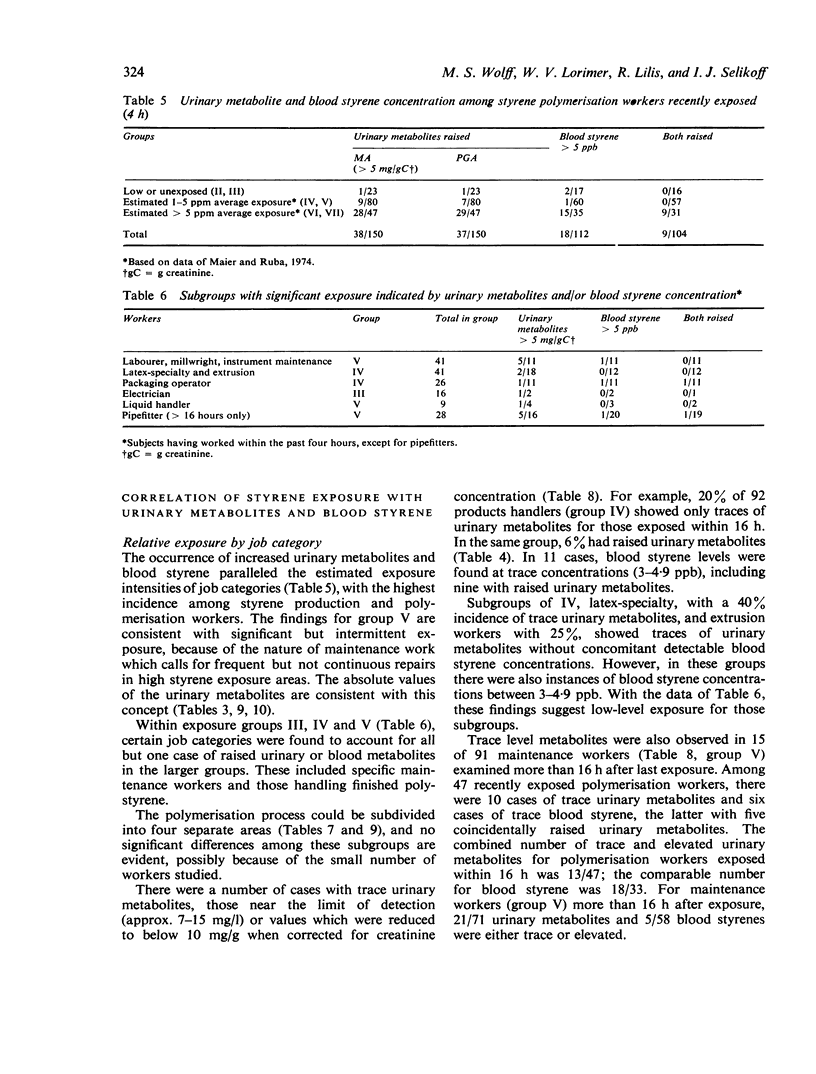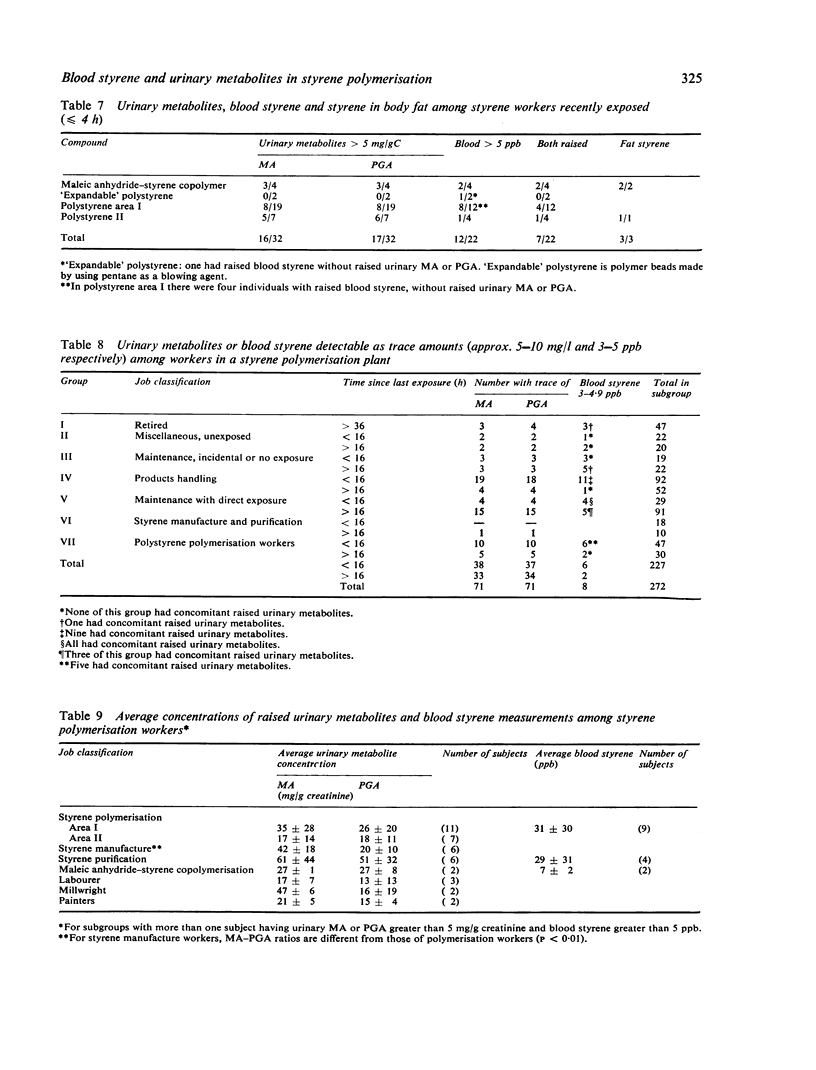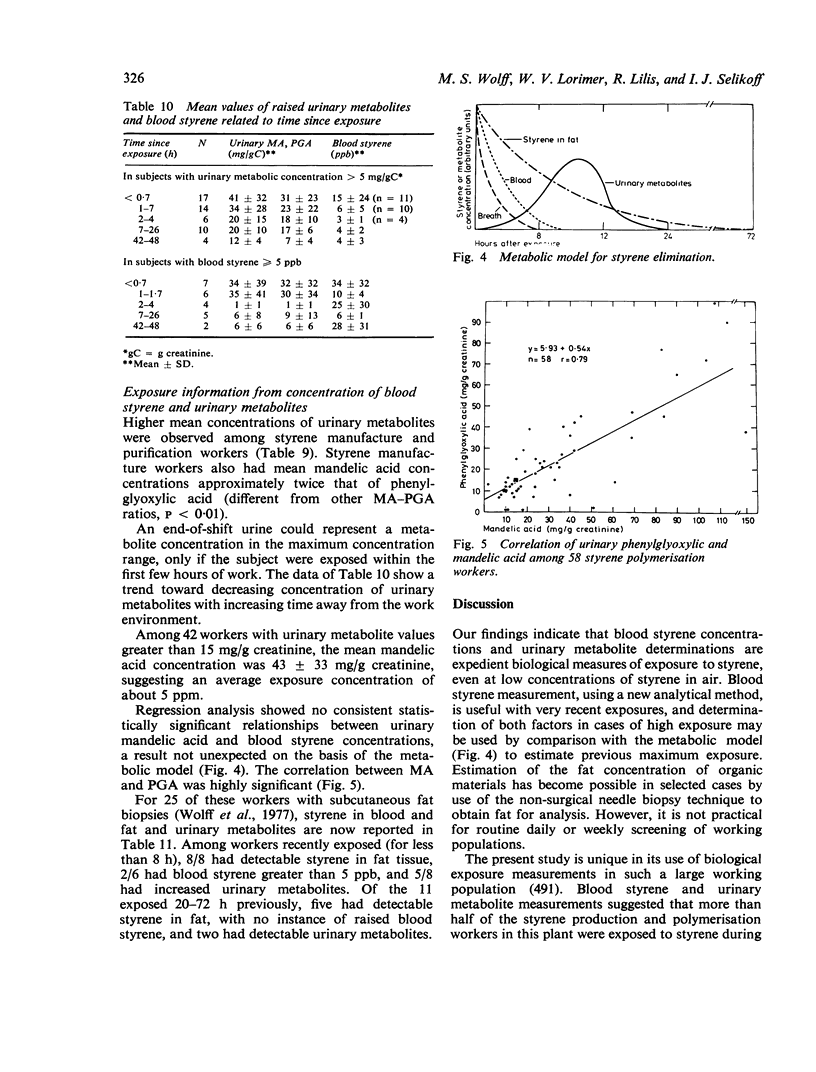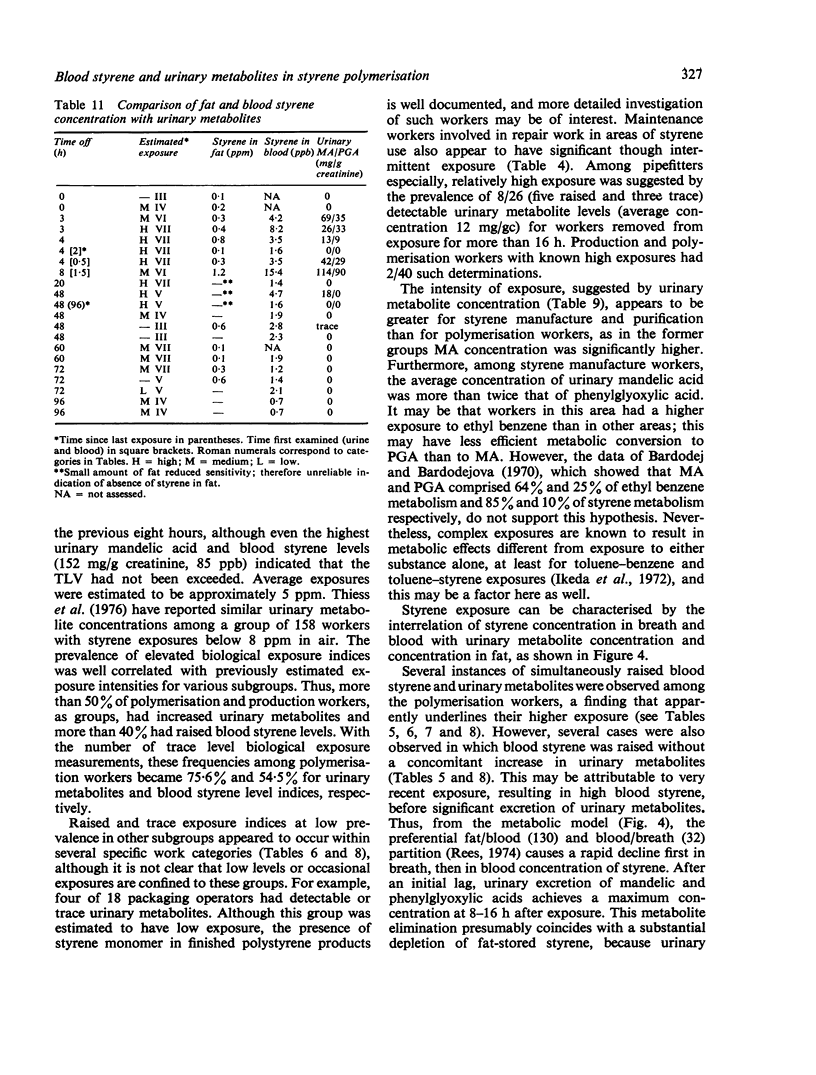Abstract
The results of the analysis of blood and urine samples for styrene and its metabolites in 491 workers in a styrene polymerisation plant in the United States are reported. The levels of exposure to styrene were estimated to be less than 10 ppm, but nevertheless styrene and metabolites were detectable in more than 50% of workers in polymerisation jobs, within 4 h of exposure. Workers involved in the manufacture and purification of styrene from ethyl benzene also had detectable blood styrene and urinary metabolites in 83% of recently exposed subjects. The relationship between styrene in blood and in subcutaneous fat and urinary metabolites as pharmacokinetic variables is discussed.
Full text
PDF











Selected References
These references are in PubMed. This may not be the complete list of references from this article.
- A rapid colorimetric method for the determination of phenylglyoxylic and mandelic acids. Its application to the urinalysis of workers exposed to styrene vapour. Br J Ind Med. 1970 Apr;27(2):150–154. doi: 10.1136/oem.27.2.150. [DOI] [PMC free article] [PubMed] [Google Scholar]
- Astrand I., Kilbom A., Ovrum P., Wahlberg I., Vesterberg O. Exposure to styrene. I. Concentration in alveolar air and blood at rest and during exercise and metabolism. Work Environ Health. 1974;11(2):69–85. [PubMed] [Google Scholar]
- Astrand I. Uptake of solvents in the blood and tissues of man. A review. Scand J Work Environ Health. 1975 Dec;1(4):199–218. [PubMed] [Google Scholar]
- Bardodej Z., Bardodejova E. Biotransformation of ethyl benzene, styrene, and alpha-methylstyrene in man. Am Ind Hyg Assoc J. 1970 Mar-Apr;31(2):206–209. doi: 10.1080/0002889708506230. [DOI] [PubMed] [Google Scholar]
- Corbett T. H. Retention of anesthetic agents following occupational exposure. Anesth Analg. 1973 Jul-Aug;52(4):614–618. [PubMed] [Google Scholar]
- Creech J. L., Jr, Makk L. Liver disease among polyvinyl chloride production workers. Ann N Y Acad Sci. 1975 Jan 31;246:88–94. doi: 10.1111/j.1749-6632.1975.tb51084.x. [DOI] [PubMed] [Google Scholar]
- Engström K., Härkönen H., Kalliokoski P., Rantanen J. Urinary mandelic acid concentration after occupational exposure to styrene and its use as a biological exposure test. Scand J Work Environ Health. 1976 Mar;2(1):21–26. doi: 10.5271/sjweh.2825. [DOI] [PubMed] [Google Scholar]
- Engström K., Rantanen J. A new gas chromatographic method for determination of mandelic acide in urine. Int Arch Arbeitsmed. 1974;33(3):163–167. doi: 10.1007/BF00538915. [DOI] [PubMed] [Google Scholar]
- Hunter C. G., Blair D. Benzene: pharmacokinetic studies in man. Ann Occup Hyg. 1972 Nov;15(2):193–201. doi: 10.1093/annhyg/15.2-4.193. [DOI] [PubMed] [Google Scholar]
- Ikeda M., Otsuji H., Imamura T. In vivo suppression of benzene and styrene oxidation by co-administered toluene in rats and effects of phenobarbital. Xenobiotica. 1972 Mar;2(2):101–106. doi: 10.3109/00498257209111041. [DOI] [PubMed] [Google Scholar]
- Maltoni C., Lefemine G. Carcinogenicity bioassays of vinyl chloride: current results. Ann N Y Acad Sci. 1975 Jan 31;246:195–218. doi: 10.1111/j.1749-6632.1975.tb51094.x. [DOI] [PubMed] [Google Scholar]
- Milvy P., Garro A. J. Mutagenic activity of styrene oxide (1,2-epoxyethylbenzene), a presumed styrene metabolite. Mutat Res. 1976 Jan;40(1):15–18. doi: 10.1016/0165-1218(76)90017-3. [DOI] [PubMed] [Google Scholar]
- Riley E. C., Fassett D. W., Sutton W. L. Methylene chloride vapor in expired air of human subjects. Am Ind Hyg Assoc J. 1966 Jul-Aug;27(4):341–348. doi: 10.1080/00028896609342839. [DOI] [PubMed] [Google Scholar]
- Sherwood R. J. Evaluation of exposure to benzene vapour during the loading of petrol. Br J Ind Med. 1972;29(1):65–69. doi: 10.1136/oem.29.1.65. [DOI] [PMC free article] [PubMed] [Google Scholar]
- Slob A. A new method for determination of mandelic acid excretion at low level styrene exposure. Br J Ind Med. 1973 Oct;30(4):390–393. doi: 10.1136/oem.30.4.390. [DOI] [PMC free article] [PubMed] [Google Scholar]
- Stewart R. D., Dodd H. C., Baretta E. D., Schaffer A. W. Human exposure to styrene vapor. Arch Environ Health. 1968 May;16(5):656–662. doi: 10.1080/00039896.1968.10665124. [DOI] [PubMed] [Google Scholar]
- Stewart R. D., Dodd H. C., Gay H. H., Erley D. S. Experimental human exposure to trichloroethylene. Arch Environ Health. 1970 Jan;20(1):64–71. doi: 10.1080/00039896.1970.10665543. [DOI] [PubMed] [Google Scholar]
- Wolff M. S., Daum S. M., Lorimer W. V., Selikoff I. J. Styrene and related hydrocarbons in subcutaneous fat from polymerization workers. J Toxicol Environ Health. 1977 May;2(5):997–1005. doi: 10.1080/15287397709529498. [DOI] [PubMed] [Google Scholar]
- van Rees H. The partition coefficients of styrene between blood and air and between oil and blood. Int Arch Arbeitsmed. 1974 Mar 12;33(1):39–47. doi: 10.1007/BF00538978. [DOI] [PubMed] [Google Scholar]


